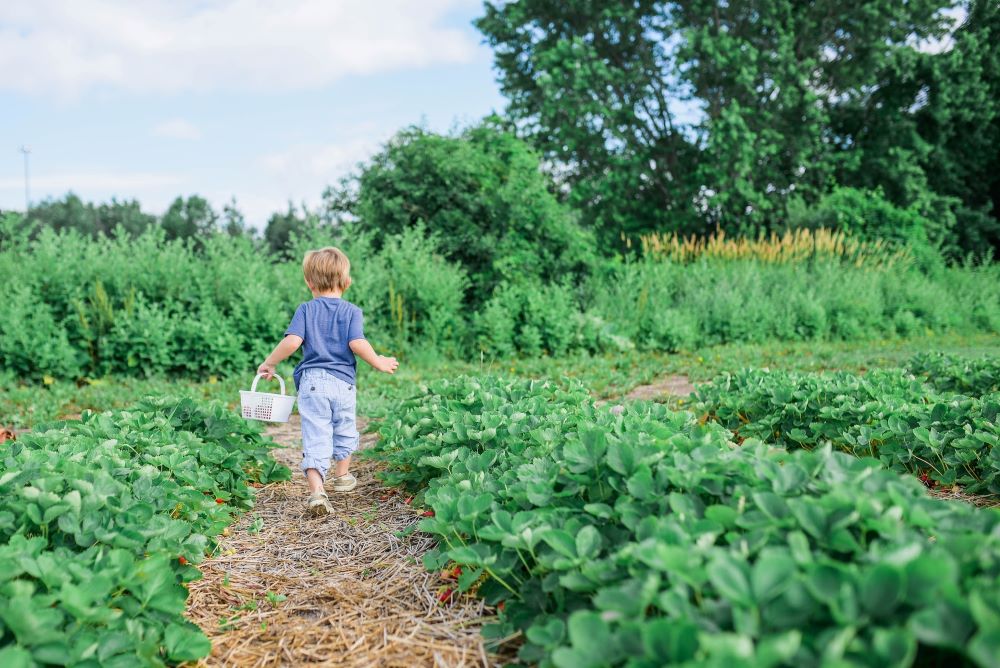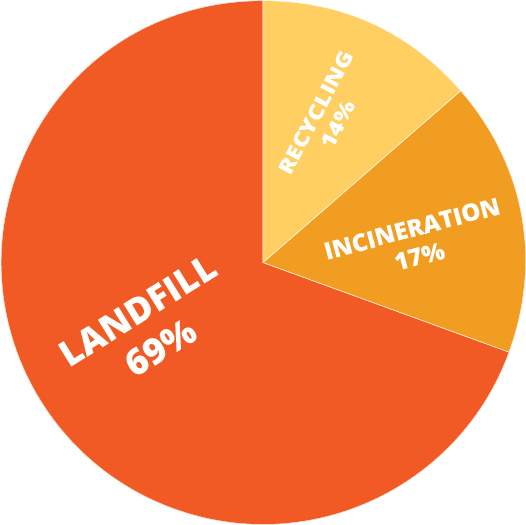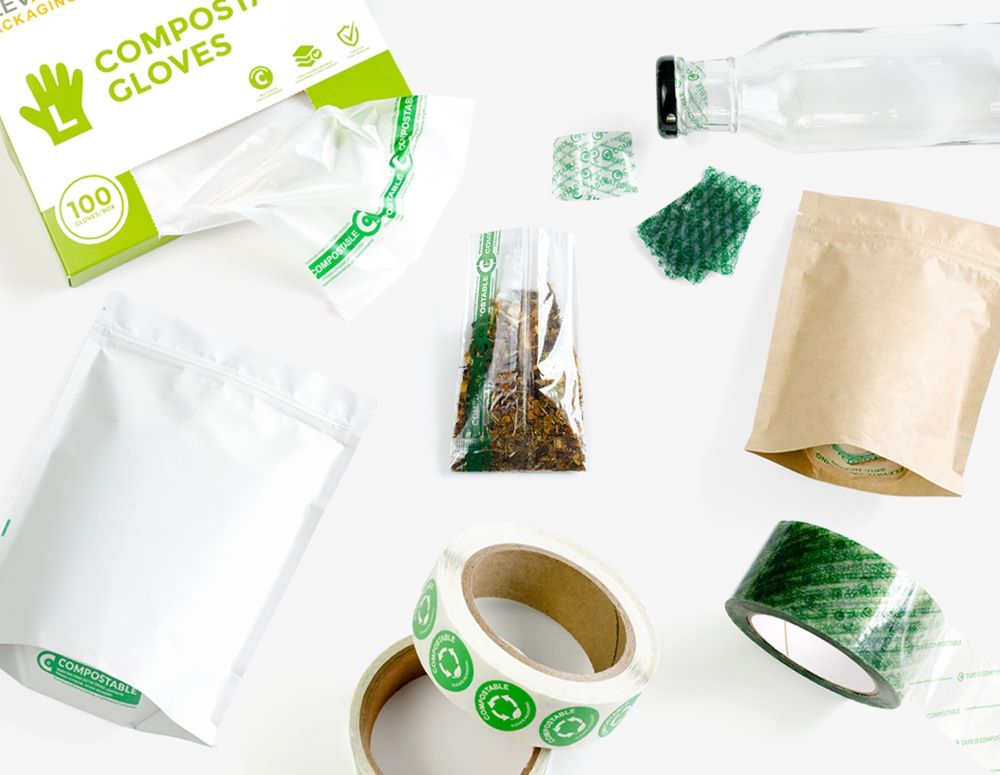Blog
Recent Posts
Compostable Packaging Reduces Plastic Pollution
Posted on

Overwhelmingly, your customers want sustainable products and packaging.
“Consumer awareness to packaging waste in oceans and landfills is driving change”
- The drive toward sustainability in packaging, McKinsey & Company
In a 2020 survey by McKinsey, 75% of millennial respondents said that they considered sustainability when making a purchase.
You already provide eco-friendly products. By choosing compostable packaging for those products you are actively taking the lead towards a more sustainable future.
The benefits of compostable packaging are substantial. Not only can it reduce the amount of waste sent to landfills, compostable packaging can also help create an end product beneficial to our soil and the planet - compost.

Ready to Start Your Sustainability Journey?
The Effects of Plastic Packaging
The widespread use of plastic packaging has created an immeasurable burden on our environment. Most of the plastic waste ever produced still exists, buried in landfills and filling our oceans. Plastic trash has been found at the bottom of the world’s deepest ocean trench. Microplastics have been found in the soil, in fresh Antarctic snow, and even in our blood.
The EPA estimated that 14.5 million tons of plastic packaging and containers were generated in 2018. Of this, approximately 10 million tons (or 69%) ended up in landfills. Plastic packaging and containers alone make up over 23% of the total material sent to landfills in the U.S.

Landfills take up valuable space that could be used for housing or growing food. They don’t offer the proper environment for effective decomposition and ultimately cause the release of dangerous emissions into our atmosphere.
What about the 31% of plastic packaging that is not landfilled?
Very little of the plastic we discard is recycled. Only 14% of the plastic packaging and containers generated in 2018 were recycled. The remaining 17% was incinerated.
Recycling efficiency in the U.S. is abysmal. A large amount of the plastic containers produced can’t even be recycled in the first place! This is largely because:
- They are made from mixed materials
- Facilities needed to recycle the products do not exist
“[...] recycling facilities across the country are not able to sort, sell, and reprocess much of the plastic that companies produce.”
-
Just a Tiny Fraction of America’s Plastic Can Actually Be Recycled, Yale360

Virgin raw materials are cheap. Reclaiming plastic via recycling often costs more than using new, and the materials reclaimed may not be as good quality. As a result, it’s difficult for the plastic packaging industry to justify using inferior recycled materials over cheaper new materials.
Circular Economy and Plastic Waste Management
The concept of a circular economy, where materials are kept in use for as long as possible through effective recycling and reuse, offers a compelling solution to the plastic waste crisis. Unfortunately, when it comes to conventional plastics, recycling efforts have fallen woefully short of achieving a truly circular model.
As discussed earlier, recycling rates for plastic packaging in the U.S. are alarmingly low, with only 14% of plastic containers being recycled in 2018. The remaining plastic waste ends up in landfills or incinerators, contributing to environmental degradation and greenhouse gas emissions.
Even when plastic is recycled, the process is far from perfect. Recycled plastics often suffer from quality degradation, limiting their potential for reuse in new products. Additionally, the recycling process itself can be energy-intensive and generate further waste and emissions.
Compostable packaging aligns seamlessly with the principles of a circular economy. Unlike conventional plastics, which are derived from finite fossil fuel resources, compostable materials are made from renewable resources and can be broken down into nutrient-rich soil through composting.
Compostable Packaging Reduces Waste
Like the cycle of life and decomposition in nature, composting is endlessly circular.
By choosing compostable packaging, you are embracing a waste management approach that keeps valuable resources in a continuous cycle, mimicking nature's own processes of decomposition and regeneration. The end product –compost– can then be used to nourish soil and support the growth of new plants, perpetuating the circular flow of materials.
In a world grappling with the consequences of plastic pollution, compostable packaging represents a true circular solution, one that eliminates the need for complex and often ineffective recycling systems. It is a vital step towards a sustainable future, where waste is minimized, and resources are replenished rather than depleted. Compostable packaging is one of the most eco-friendly solutions we have in the fight against plastic!
By embracing these innovative solutions and investing in research and development, we can pave the way for a more sustainable future and mitigate the impact of plastic pollution on our planet.
The huge impact of your choice to use compostable packaging is clear. Your sustainable practices are so much more than waste reduction alone. Compostable packaging reduces waste, supports composters, helps to improve soil health, and is an integral part of a circular economy.
*Originally posted Aug 24th 2022, updated Apr 24th 2024
Eco-Conscious Businesses: Celebrating Earth Day Every Day
#EarthDayEveryDay Earth Day is a catalyst for real positive change. It contributes to education and outreach by spreading knowledge about environmental challenges. Earth Day unites people worldwide in a common cause, inspiring people to get involved by raising visibility and making environmental goals seem more achievable. More than just talk, Earth Day inspires hands-on action by providing [...]
The True Cost of Plastic Packaging
Plastic revolutionized packaging with its low cost, durability, and versatility. These attributes allowed plastic to become the go-to material for cheap, lightweight packaging that could protect products throughout the entire supply chain. The same properties that make plastic packaging so practical and popular are the core drivers behind its catastrophic environmental, health, and economic impact. Low [...]
Sustainable Packaging Guide - Compostable Refill Pouches
While single-use packaging has dominated recent decades, growing sustainability awareness is bringing refillable systems back into the spotlight. Consumers are increasingly recognizing the many benefits of refilling and reusing. Refill systems are a powerful way to break the make-take-waste economy of disposable products that clutter our landfills. These systems combine reusable containers with separately purchased refills. [...]
Sustainable Packaging Guide - Pouches and Flexible Packaging
Recognized for their minimal environmental footprint, durability, and user-friendly features — including reclosable zippers and tear notches — stand-up pouches have become a preferred packaging choice for a huge number of brands. The first stand-up pouch was invented in 1963 by Louis Doyen and was originally designed for packaging fruit juice. The “Doypack” design utilized a [...]
The Growing Importance of Eco-Friendly Natural Products
Demand for cleaner, organic, natural products continues to grow! Consumers are more aware of the negative impact of petroleum-based plastics and synthetic chemicals than ever. The products we use in our daily lives matter. The things that we eat, use, put on our skin, or keep in our homes should be good for us and good [...]
Compostable Packaging and Extended Producer Responsibility
Almost everything we purchase online or from a store usually comes in some sort of packaging. Whether they are boxes, plastic wrappers, or bags, these packaging materials often end their journey as waste, with a significant portion ending up in landfills. Extended Producer Responsibility (EPR) is a policy framework that aims to shift the responsibility for [...]
The Impact of Hidden Plastics in Business
Every day, we're making positive steps towards more sustainable living. We've switched to reusable grocery bags, sipped our drinks through paper straws, and swapped plastic packaging for compostable. As conscious consumers and business owners, we're doing our part to reduce plastic waste. But have you considered the hidden plastics we often overlook? Stickers on packages, shrink [...]
Sustainable Packaging Guide - Eco-friendly Tape
With the average American household receiving a staggering 162 packages in 2022 and global shipments reaching a monumental 356 billion in 2023, the impact of our packaging choices cannot be overstated. Packing tape, often hidden in plain sight, is an integral part of shipping goods to retailers, vendors, and customers. Most packages will have tape, and [...]
Effects of Temperature on Composting
We’ve previously discussed how successful composting requires the correct ratio of nitrogen to carbon materials, plus oxygen and moisture. Temperature is also an important part of the composting process. The multitude of microorganisms that feed on organic matter in an aerobic compost pile create heat as part of the decomposition process, with internal temperatures reaching as [...]
 Loading... Please wait...
Loading... Please wait...



